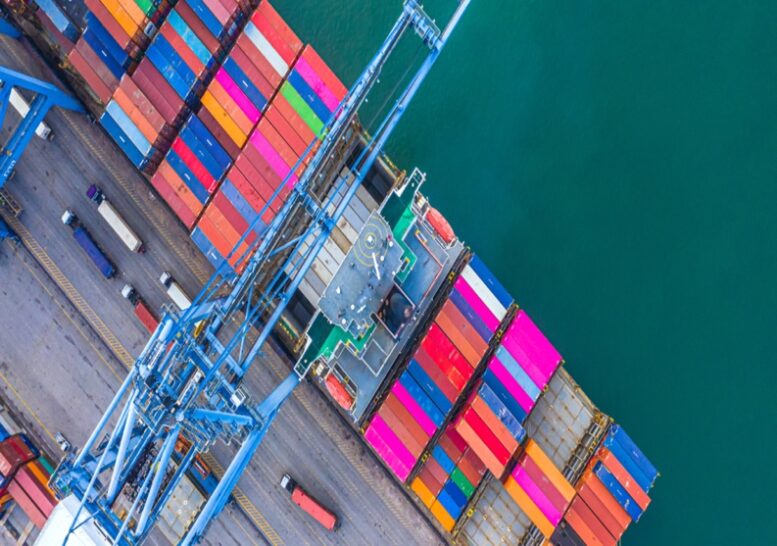The list of presented measures is non-exhaustive and is a result of initial research and findings, aiming to raise awareness of potential ideas which the maritime community could explore further. The measures have not been ranked in terms of emission reduction potential, but have been ordered into measures related to port operations, administrative data, nautical data and speed optimization.
Each measure presented in the Guide can be individually implemented, or implemented collectively – which would maximize the emission reduction benefit.
The eight practical measures presented in the guide are:
- Facilitate immobilization in ports: Implementation of this measure would allow for maintenance and repairs of the main engine (ME) to occur simultaneously with cargo operations. This would contribute to a reduction in GHG emissions as it would optimize the time spent in port, and eliminate the need for the ship to transit to another location for work to be undertaken.
- Facilitate hull & propeller cleaning in ports: Implementation of this measure would allow hull and propeller cleaning to take place in port, ideally simultaneously with cargo operations. This would contribute to a reduction in GHG emissions as it would optimize the time spent in port and eliminate the need for the ship to transit to another location for hull and propeller cleaning to be performed, as well as the reduced GHG emissions as a result of the hull and propeller cleaning itself.
- Facilitate simultaneous operations (SIMOPS) in ports: Implementation of this measure would allow operations to occur simultaneously (e.g., cargo, bunkering, provisioning, tank cleaning, etc.). This would contribute to a reduction in GHG emissions as it would optimize the time spent in port, as operations can be concluded in parallel rather than in sequence.
- Optimize port stay by pre-clearance: This measure optimizes the port call and aims to eliminate unnecessary waiting time by facilitating all required clearances in advance, thereby contributing to a reduction in GHG emissions through the optimized port stay.
- Ships may experience operational delays on arrival, during port operations or at departure due to clearance processes in ports. The delays may need to be recovered in transit, often resulting in higher transit speeds, and thereby increased fuel consumption and emissions. Port stay optimization can be supported by introducing pre-clearance of e.g. customs, immigration, port health or port authority formalities, avoiding waiting time to arrive, during operations alongside or to depart, in line with standard 2.1.2 of the FAL Convention: “Public authorities shall develop procedures for the lodgment of pre-arrival and pre-departure information in order to facilitate the processing of such information for the expedited subsequent release/clearance of cargo and persons.”
- Improve planning of ships calling at multiple berths in one port: This measure aims to improve the planning of ships calling at multiple berths in one port, as is often the case with container feeder ships, chemical and parcel tankers. This measure aims to ensure:
- Just in Time shifting of ships between berths; and
- Optimization of cargo operations. Addressing the planning would result in lower GHG emissions as the ship’s time under engine in port, the terminal operations, as well as all services ordered (e.g. nautical service providers), are aligned which result in improved port turnaround times and present an opportunity for bunker savings in a subsequent voyage to the next port of call, thereby contributing to a reduction of GHG emissions.
- Improve ship/berth compatibility through improved Port Master Data: This measure involves improving Port Master Data to ensure that the right ship size is utilized, by:
- reliable identification of the terminal and berth, and
- reliable maximum length and beam per berth. Having the right ship size utilized results in lower GHG emissions per carried ton of cargo.
- Enable ship deadweight optimization through improved Port Master Data: This measure involves improving Port Master Data (depths, water density, tidal heights) to enable optimization of the draught of the ship, eliminating unnecessary allowances and additional buffers in the Under Keel Clearance (UKC). Improved access to reliable and up to date Port Master Data allows for better optimization of the deadweight capacity and therefore contributes to a reduction in GHG emissions per cargo ton transported.
- Optimize speed between ports: This measure would allow for ships to optimize speed between ports, to arrive “Just In Time” when the berth, fairway and nautical services are all available. This “Just In Time Arrival” concept (JIT Arrival) will improve the port call process and ultimately reduce GHG emissions.
Through the application of JIT Arrival, GHG emissions and air pollutants can be reduced in a twofold manner:
- for the ship voyage through the optimization of the sailing speed and hence more optimal engine efficiency resulting in lower fuel consumption; and
- for the port area as the number of time ships maneuvering in the approaches or waiting at anchorage is reduced.
While particularly useful for stakeholders within the port community (e.g., port authorities, terminals, nautical service providers), the Guide is also relevant for ship owners, operators, charterers, ship agents, shipbrokers, and other relevant stakeholders. These play a key role in implementing the necessary changes and facilitating the uptake of emission reduction measures in the ship-port interface.
The Low Carbon GIA was launched with the aim to identify and develop innovative solutions to address common barriers to the uptake and implementation of energy efficiency technologies and operational measures. Since January 2020, the Low Carbon GIA has been operating under the GreenVoyage2050 Project, a joint IMO-Norway initiative to support the implementation of the Initial IMO GHG Strategy.

Download the Ship-port Interface Guide:
https://safety4sea.com/wp-content/uploads/2021/03/IMO-Ship-Port-Interface-Guide-2021_03.pdf
